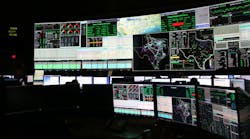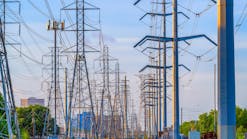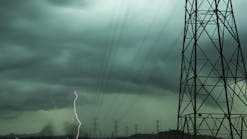Periodically, we get a major reality check when events are thrust upon us that we either underestimated or just did not think would happen in the first place.One such reality check came this year as a winter storm descended on the state of Texas like a mad brahma bull trying to throw a crazy cowboy trying to ride him. Winter storm Uri, as it was known, brought an unprecedented combination of ice, snow, and frigid subfreezing temperatures for most of a week to the entire state of Texas.
As Texans, we diligently and readily prepare for hurricanes in the summer months. We readily prepare for oppressive summer heat and air conditioning peak load demand. But nearly a week of subzero temperatures encompassing nearly the entire state? Unfortunately not this time.
As members of ASCE’s Committee of America’s Infrastructure (CAI) working on the Energy Chapter Report Card, skillfully led by Otto Lynch and ASCE staff, our task group was just in the process of defending the decision to increase the Energy Chapter report card grade from D+ to C-, (https://infrastructurereportcard.org/cat-item/energy/) when the entire electrical grid in Texas came within minutes of collapsing.
You can read more on that in Gene Wolf’s great article in the April issue of T&D World (https://tdworld.com/21156928), "When Minutes Are Critical." Many great questions were being asked by those outside our industry about that decision to raise the Energy Chapter grade. And more than a few sanity checks were being made by the group. But in the end, we stood by the better grade knowing our power industry has been re-investing in electricity infrastructure. Resilience and reliability improvements have been made. Can more be done? For sure.
Few of us living in Texas from the early morning hours of Feb. 14 through the end of the day on Feb. 18 need to be reminded that more can be done. An estimated 210 Texans died from causes related to the Winter Storm Uri event. That should not be ignored. When nothing you depend on for daily survival is working, and it is as frigidly cold in your house as it is outside, it hits you like a nearby lightning bolt strike – very, very startling.
Winter Storm Uri reminded us that the entirety of the critical infrastructure that we depend on, and take for granted, can be disrupted by a few days' loss of what the industry we all work for provides: electrical power. Hindsight always provides a clearer view, but we are now coming to realize that a critical part of the totality that is the “electrical grid” here in Texas was certainly not adequately prepared for an event like Winter Storm Uri.
The generation side of the grid simply was not as prepared as it should have been for such an event. There is little doubt that “contingency plans” for such a cold weather event were just not adequate. More than 48% of the electrical generation capacity (more than 51 GW) here in Texas was offline at the peak of the Winter Storm Uri event. With resulting load shed events ordered, no electricity being generated meant homes and businesses went dark and without heat. Municipal water systems became at risk due to lack of power. Sewage treatment plants became at risk. Telecommunication systems, both wired, and wireless became more intermittently available. Transportation infrastructure was affected not only by the snow and ice on the roadways disrupting trucking, but by the power outages since gas pumps cannot operate without electricity.
A significant amount of natural gas production and gas transmission facilities critically needed for power generation appears to have been critically affected by both the cold weather event as well as the circular interdependency of those facilities on reliable electrical power to pump and move gas to the generation facilities.
What’s Next?
Winter Storm Uri rightfully shook the confidence of nearly all 30 million Texans who call the Lone Star State home. Few outside this industry understand the complex supply and demand balance that must be maintained every second of every minute, 24 hours per day. Thanks to Winter Storm Uri, this structural engineer learned more about how low frequency relays operate than I ever thought I needed to know. I also learned that we must stay continuously vigilant and always working to “prepare for the unexpected."
Texas (ERCOT) came perilously close to experiencing the need for a first-ever “black start” event. As we all know, that is not something we want to ever experience. Thanks to the dedicated and very hard-working folks who manage electrical power in our state, the Texas grid did not collapse. But let us learn from this event and be better prepared next time. As engineers, we know there will be a next time.
Stay safe, stay healthy, and let’s continue to learn from the past and keep looking to the future everyone!
Wesley J. Oliphant, P.E., is vice president, Utility Services at Exo Group, LLC. He is a Life Member and Fellow of ASCE and SEI, and the current Chair of ASCE/SEI’s Committee of Electrical Transmission Structures. He is also a Member of ASCE’s Committee of America’s Infrastructure, and a longtime Member of IEEE and currently serves on NESC Subcommittee 5 for Strengths and Loadings.


